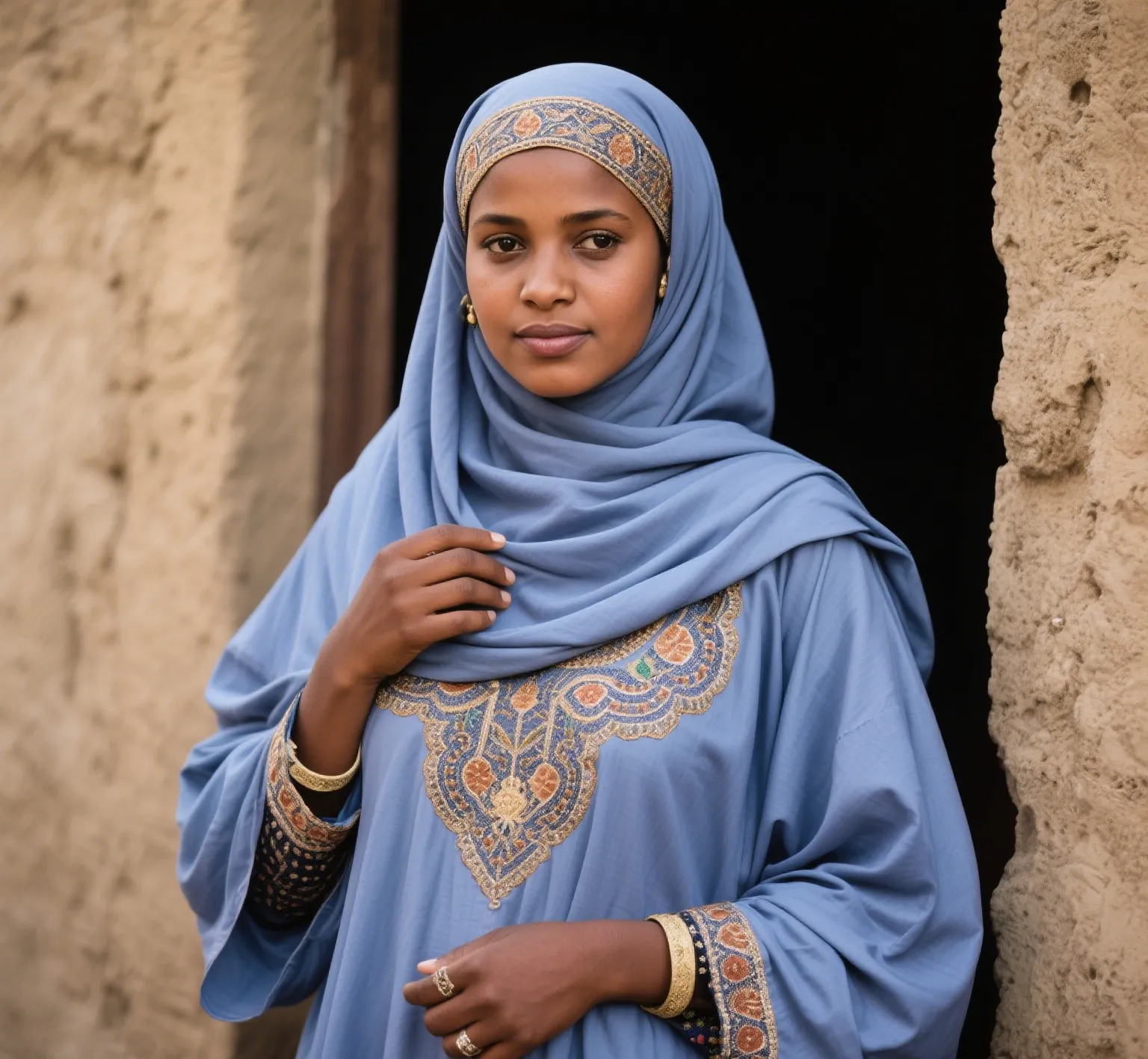أبريل . 21, 2025 15:12 العودة إلى القائمة
The Toub: A Living Tapestry of Sudanese Identity, Resistance, and Renewal
In Sudan’s sun-scorched landscapes and bustling cities, a 15-foot fabric whispers stories of empires, revolutions, and timeless femininity. The Sudanese toub, a flowing garment of cotton, silk, or chiffon, is more than attire—it is a canvas where history, identity, and defiance intertwine. From ancient Nubian queens to TikTok trends, the Sudan toub remains an unbroken thread linking Sudan’s past, present, and future.
Ancient Roots, Modern Threads: The Toub’s Timeless Journey
The toub’s origins stretch back over 10 millennia to the Nile Valley, where early Sudanese civilizations draped themselves in its folds. But its true soul lies in its adaptability. Worn by tribes as diverse as the nomadic Bija of the Red Sea Hills and the agrarian communities of Kordofan, the toub transcended geographic and cultural boundaries. Its most iconic chapter, however, began with the Kandaka—the warrior queens of Kush who ruled lands stretching from Sudan to Egypt. To these women, the toub was armor and crown, a declaration of sovereignty long before the word "feminism" existed.
Today, the Kandaka’s legacy lives not only in history books but in Sudan’s streets. The term, meaning “strong woman,” has been reclaimed by modern activists, linking ancient power to contemporary struggles. During the 2019 revolution, young women chanted "Kandaka’s granddaughters will finish what she started"—a testament to how the toub’s symbolism evolves yet endures.
Weaving Identity: Rituals, Resistance, and Revival
Rites of Passage
For Sudanese women, the toub marks life’s defining moments. At weddings, brides step into womanhood swathed in crimson toubs, their red hues symbolizing joy and new beginnings. The Jirtig ceremony transforms the garment into a familial covenant: as the bride sits on an embroidered bed, female relatives present her with toubs as both dowry and blessing. Meanwhile, white toubs—crafted from humble cotton—speak to loss and resilience. Worn during mourning, they embody communal solidarity, a visual prayer for peace amid grief.
Fabric of Revolution
In 2019, white toubs became uniform of rebellion. Protesters like Alaa Salah, immortalized atop a car chanting "Freedom, peace, justice!" turned the garment into a shield against oppression. Her image, shared globally, proved the toub could be both tradition and protest—a duality Sudanese women have mastered.
Stitching the Future: Innovation and Global Resonance
While elders preserve the toub’s techniques, a new generation reimagines its potential. Brands like Regal Fabric Gallery fuse geometric Nubian motifs with minimalist cuts, while House of Randa pairs traditional draping with bold prints. Beyond fashion, artists like Toga Al Tahir elevate the toub to high art. At Dubai’s Jameel Arts Centre, Al Tahir transformed the garment into an installation, its folds narrating Sudan’s diaspora stories to global audiences.
Social media, too, has become a loom for innovation. When singer Eman Elsharef released Waleed Min Al Shukreeya in 2020, Sudanese teens worldwide responded with TikTok videos of themselves dancing in toubs—a digital haka celebrating identity. For youth raised abroad, these trends bridge continents, proving heritage needs no passport.
Guardians of the Fold: Mothers, Mentors, and Memory
The toub’s survival hinges on intergenerational whispers. In Sudanese households, mothers teach daughters the art of wrapping—a ritual as intimate as storytelling. At Ahfad University for Women, students honor this legacy during Women’s Week, parading toubs down runways alongside tech startups and poetry slams. Here, the garment is both archive and manifesto, challenging stereotypes of Sudanese womanhood.
My own journey with the toub began in Khartoum’s fabric markets, where my mother would ask, “Does this color reflect my soul?” Those hours among silks and laughter taught me that the toub isn’t worn—it’s performed. Each twist and tuck whispers, “This is who we are.”
Conclusion: The Unbroken Thread
The toub defies simple categorization. It is heirloom and hashtag, shroud and banner. For Sudan—a nation navigating revolution and rebirth—it mirrors the resilience of its people: adaptable yet unyielding, rooted yet revolutionary. As designers rework its folds and activists don it anew, the toub remains a promise—that Sudan’s story, like its most iconic garment, will continue to unfold.
Explore the Legacy: Discover contemporary toub designs at https://www.wwscarf.com, where tradition meets innovation. For every purchase, we support Sudanese artisans preserving this craft for generations to come.

-
Why Satin Square Scarves Are the Ultimate Hair Accessory
أخبارApr.27,2025
-
Hijabs for Women: How to Match with Every Outfit
أخبارApr.25,2025
-
"Connect with the World, Link the Future with Intelligence” - Weiwei Textile makes its appearance at the 2025 Spring Fair.
أخبارApr.22,2025
-
The Sudanese Thobe: Weaving Tradition with Modern Craftsmanship
أخبارApr.21,2025
-
A Variety of Arab Men's Traditional Costumes
أخبارApr.21,2025














